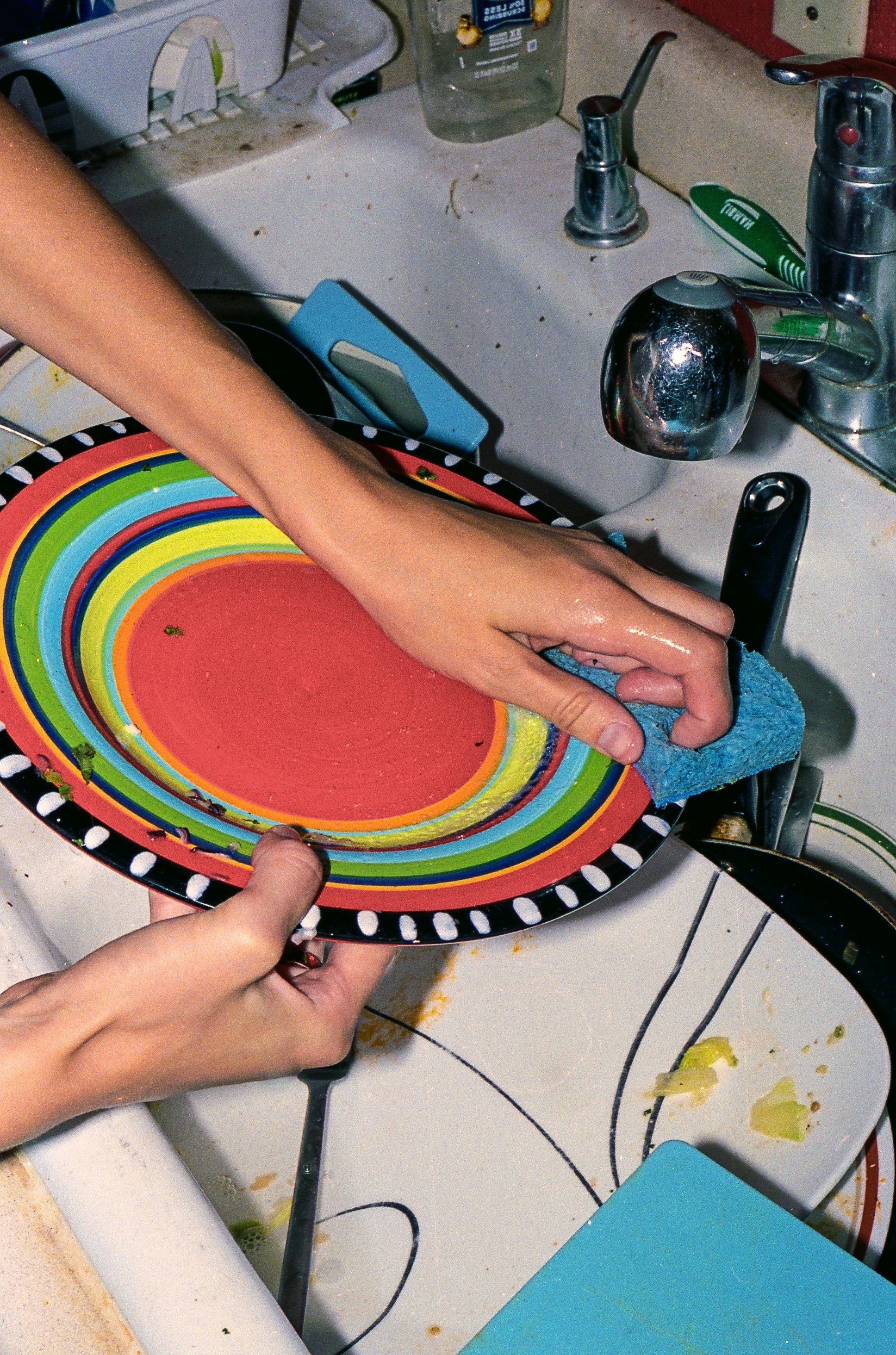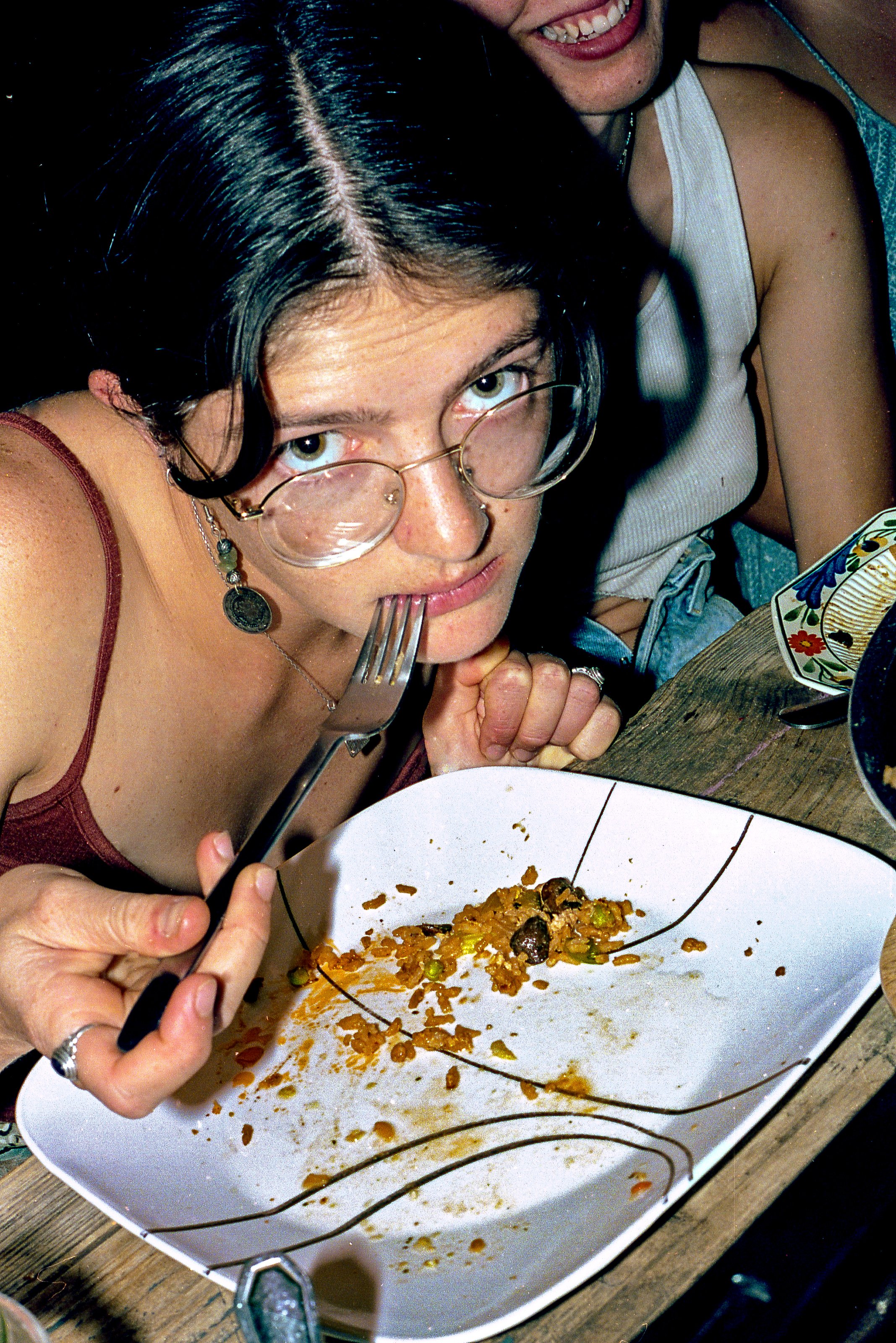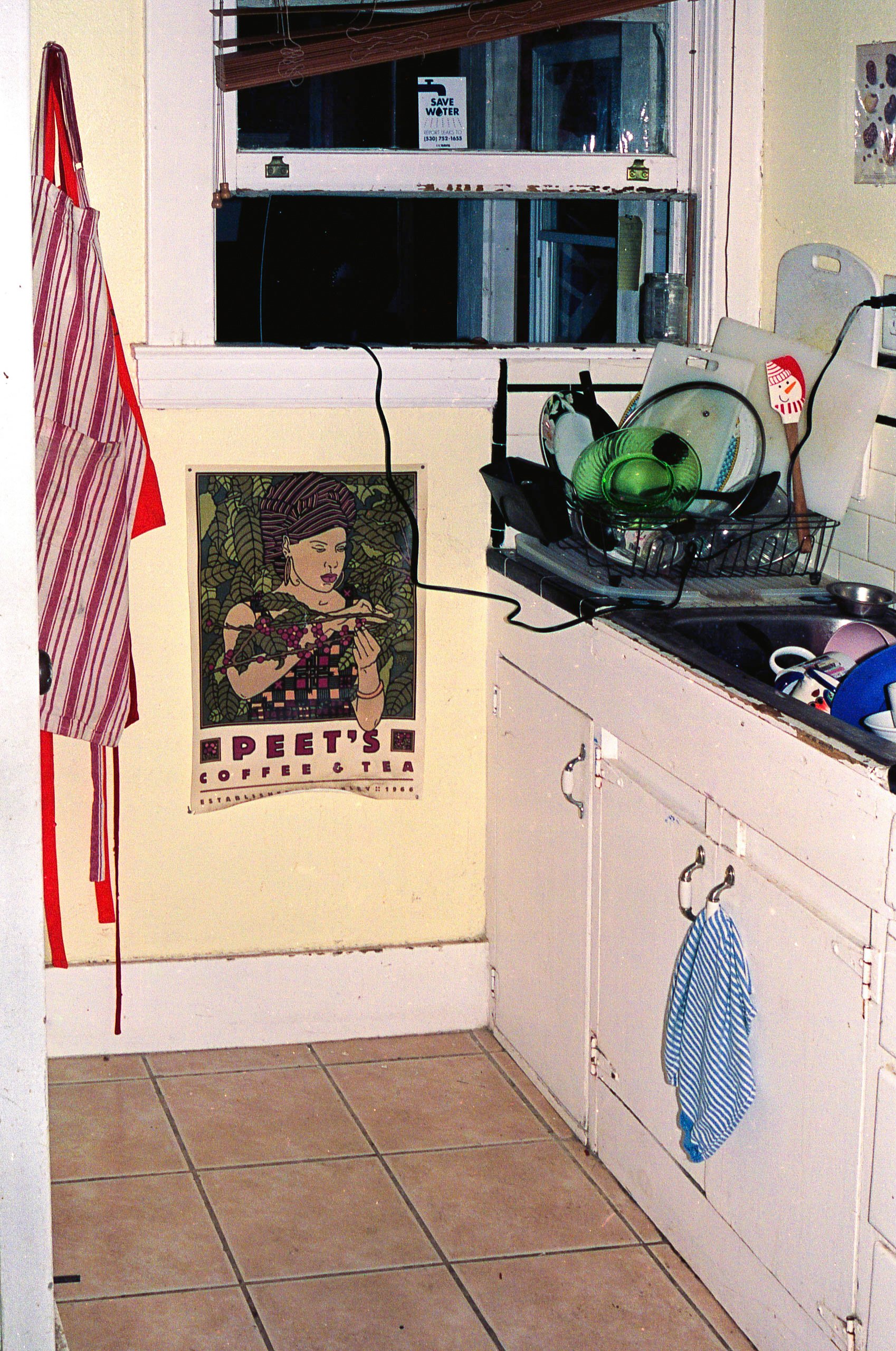Eating Places, 2018-2022
I am who, how, what I eat.
Upon skimming through my archives of this year, one theme seems to have crystallized: food and people eating it. When I finally set foot on Californian soil earlier in September to commence my studies at UC Davis, I had been overcome with a sudden desire for Mexican food. My flight from Europe that cut across the Atlantic and much of the United States had me anticipating the culinary glory I idealize Mexican food to be. Half-asleep from jet lag, in a state of dreariness, my first bite from a Taco at a local Davis restaurant ripped me back to consciousness. The feeling it evoked, I would compare to the same sensation I feel when taking a picture of a passing scene on the street, or kissing a lover – it is addicting. While venturing out in the field to photograph, prior to curating my work, I had been contemplating on the purpose of photographing fundamentally. Moreover, constructive criticism in classroom reviews has put my photographic intention into question: “what is it that you are trying to show”,“what a silly question,” I thought, the answer is right in front of you in each and every picture… and what a silly thing it is to photograph something as ordinary as food. Some of my planned photoshoots centered on food itself, elevating a pomegranate onto the highest pedestal imaginable, other focused on the mere act of eating. While setting up a table on a meadow in Berryessa, I noticed how ritualistic conducting a photoshoot is after all, much like eating, too. Step by step, I moved towards capturing the relationship of food and its consumption, the places where it is eaten and its manifold implications. I wanted to pull food by its roots and illustrate the monumental power it has over us, or in us, if you will. Collectively, the photographs meditate on the cultivation of food, its cultural relevance, and of course, its many ways of being consumed. This project draws upon paradigms and principles I have encountered in my studies of American literature and cultural anthropology at Freie Universität, Berlin.
For context, I am inviting the viewer to places of eating in Europe. Some I have been visiting frequently, others I have captured upon brief encounter. The series features mostly tables, chairs, and intentionally few faces. Somewhere in the series I have hidden a self-portrait but it might not be the obvious one.
Following this framework of “Eating-Places,” I ask the viewer to enter the next realm of my exhibition: “The Intimacy in Eating”. What might be a mundane automatism to some, is a complexity, a compulsion, or even a sexual performance to others. Eating is a power-play between us, the food we are eating, and those who are watching us do so. Think of social media, cooking shows, a night at the restaurant, your family… Broken down into five photographs, I am dissecting “eating” into “preparation, consumption, cleansing, self-exposure, emptiness,” respectively.
In continuation, I am focusing on the iconography of food, which was inspired by a quote from Martin Parr’s Real Food: “authenticity in real food is hard to find” (Henderson/Parr 7). It was Spinoza who claimed that soul and body are in unity, much alike nature and god. Authenticity, however, I consider to be a controversial term. Being authentic follows Spinoza’s principle of unity between body and soul, and is defined by uncompromising self-expression and truth to the self (Kelly 199). However, a photograph is a “transformation of a scene in literal reality” and thus a “reduction,” in other words, never actual reality; the message is continuous (Barthes 2). “Authenticity,” I understand to be ultimate self-expression and definition – a dead end (Kelly 199). Instead, I am a proponent of sincerity, which opts for communication between photographer and subject, photographer and viewer, viewer and photograph, viewer and subject, in other words it guarantees the continuity of the photographic message (199). With “Iconography of Food,” I am depicting a very romantic idea of a particular food, the pomegranate. Beyond the religious connotation, I intend to create a double entendre between merely formal aesthetics and the continuous messages of the photographs themselves. “As Derrida, among other contemporary philosophers, has demonstrated, the promise of truth to the other that marks sincerity is always contaminated internally by the threat of manipulating the other, and this threat cannot be eliminated through appeal to intention, morality, or context” (Kelly 201). On these grounds, I invite the viewer to read my photo series as an illusion, for it is based on the myth of the forbidden fruit. As a “modicum of illusion” it serves the purpose of a “beautiful stor[y],” as consolation, “not truth” (Illouz 157).
Penultimately, I am dealing with the Jeffersonian notion of the Agrarian Ideal. Suraya Akhenaton had invited me to photograph them and their team on their plot of land “The Woods,” which they restore to native Californian vegetation as part of their studies at UC Davis. I consider the Agrarian Ideal to be inherently problematic as it is based upon white, male landownership and deeply intertwined in the development of American national identity (Thompson 554, 556). This series is showing my journey of challenging and recontextualizing the Agrarian Ideal in the present time.
Finally, I am reflecting on my unique cultural context as a German expatriate on Californian soil. In “German-American Still-Life,” I am returning Jacques Derrida’s definition of sincerity by juxtaposing a culinary delicacy from my home state in Germany, called “Thüringer Rostbratwurst,” with the national flower of the United States: the red Rose. In form of an installation, the viewer may engage with the subject-matter by sitting down at the table. Its round shape is supposed to motivate the viewer to move around the table as they like. “German-American Still-Life” is lying on the table as a print underneath its very own copy suspended from the ceiling in form of four transparencies that contain each of the four colors of the CMYK-spectrum. At the right angle, the transparencies may shift in color or even show the accurate color representation as seen on the print.





Challenging the Agrarian Ideal
Strolling across campus, I found myself on a little plot of land referred to as “The Woods,” one Friday night. Its current steward Suraya Akhenaton explained to me that this land we were standing on had “previously been stewarded by the Patwin-Wintun Nation, but in recent years has found integration into the Davis community”. They and their team of three other helpers, namely Esther, Alex, and Katherina, set out to use creative management and design techniques to transform the space into a place for inclusive gathering and ecological refuge.
Challenging the agricultural ideal involves questioning how individuals exist in agricultural spaces. Shifting these spaces away from the exclusive and colonial places that they have been is necessary to transform what they mean to the people who exist within them. Building intentional communities where the standard is inclusion is something that can only be achieved by bringing alternative perspectives to the forefront of design. As a Sustainable Environmental Design student, Suraya explores how design can allow community to blossom. Suraya aims to create spaces where individuals from all backgrounds feel belonging, safety, and care in her stewardship work. The future of this field is giving land back to stewards who embody values of care and inclusion that will allow more people to enter these spaces to thrive. In cultivating the Woods, Suraya has created the necessary foundation for individuals to gather, share music, share food, and share stories.
“These days
Thinking of how I’ve planted my roots
Network of affection
Extending far and wide
Deep and down
I’m feeling better about grounding myself
For a time, I was terrified of standing still
What will happen to me if these gears stop turning!
I never did find out
Now the thought of those tender roots under earth
Feels so comforting
You don’t need to run! It’s going to be okay
Friendly reminders of living and learning
During fruitful days of photosynthesizing”
I came to document the fields and their cultivation and left with photographs of someone who is decolonizing age-old traditions of agriculture in practice and identity.
Looking to my left, I noticed fields and an orchard further in the distance. Suraya would sometimes help at the community gardens and showed me around the premises. While tiptoeing between tomatoes and variations of flowers we arrived at a persimmon tree. The sun had barely crossed the horizon when the light of golden hour radiated the same yellow tint as that of the persimmons. While I had stopped to set up my camera, Suraya climbed up into the tree. Between its two strongest branches, they recited a poem they had written on a break from work a while back
German-American Still-Life
Food. The Food. I am eating. Are you eating? Food, the thing itself. Food, the necessity. Food, the inevitability.

































